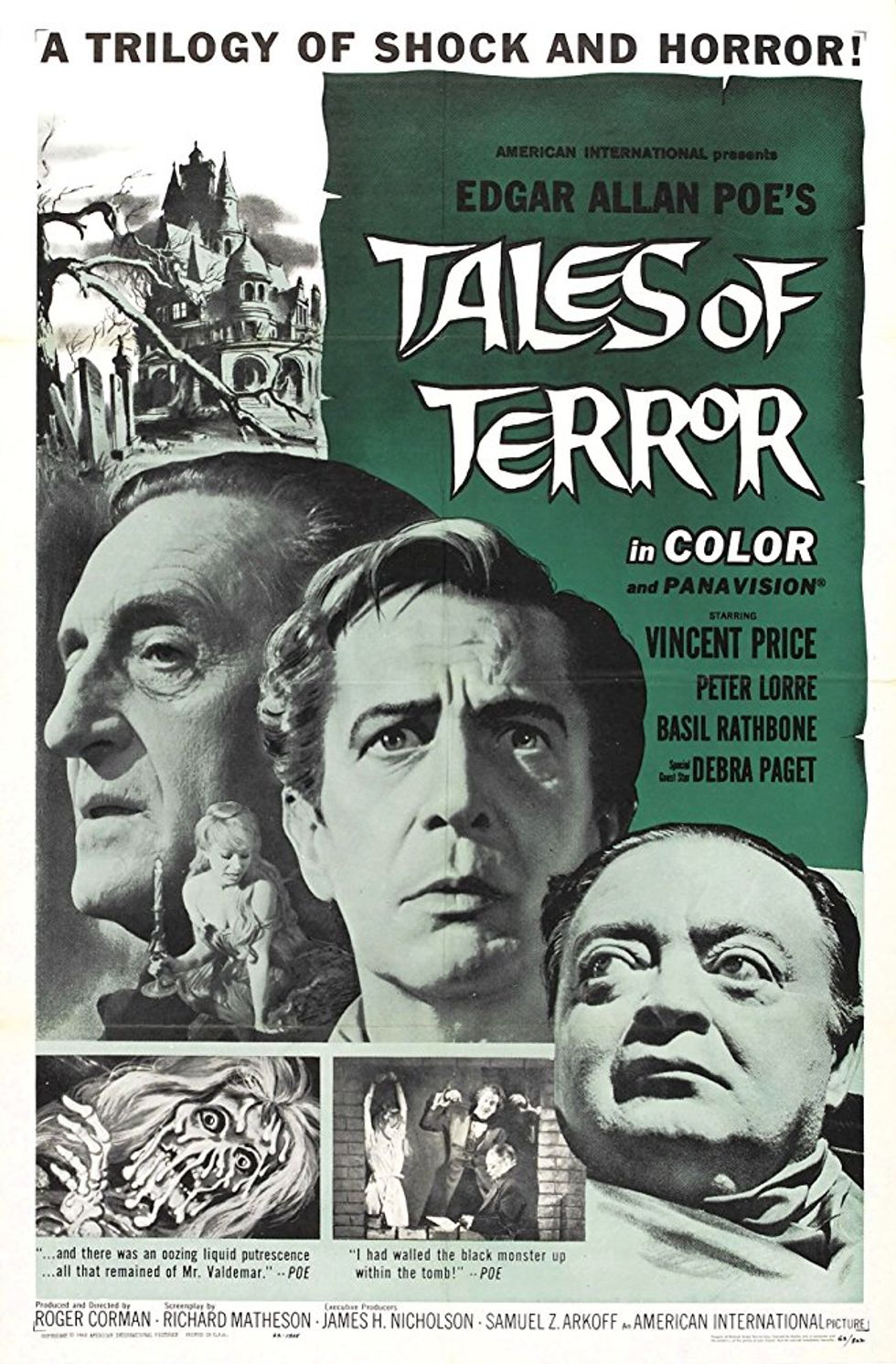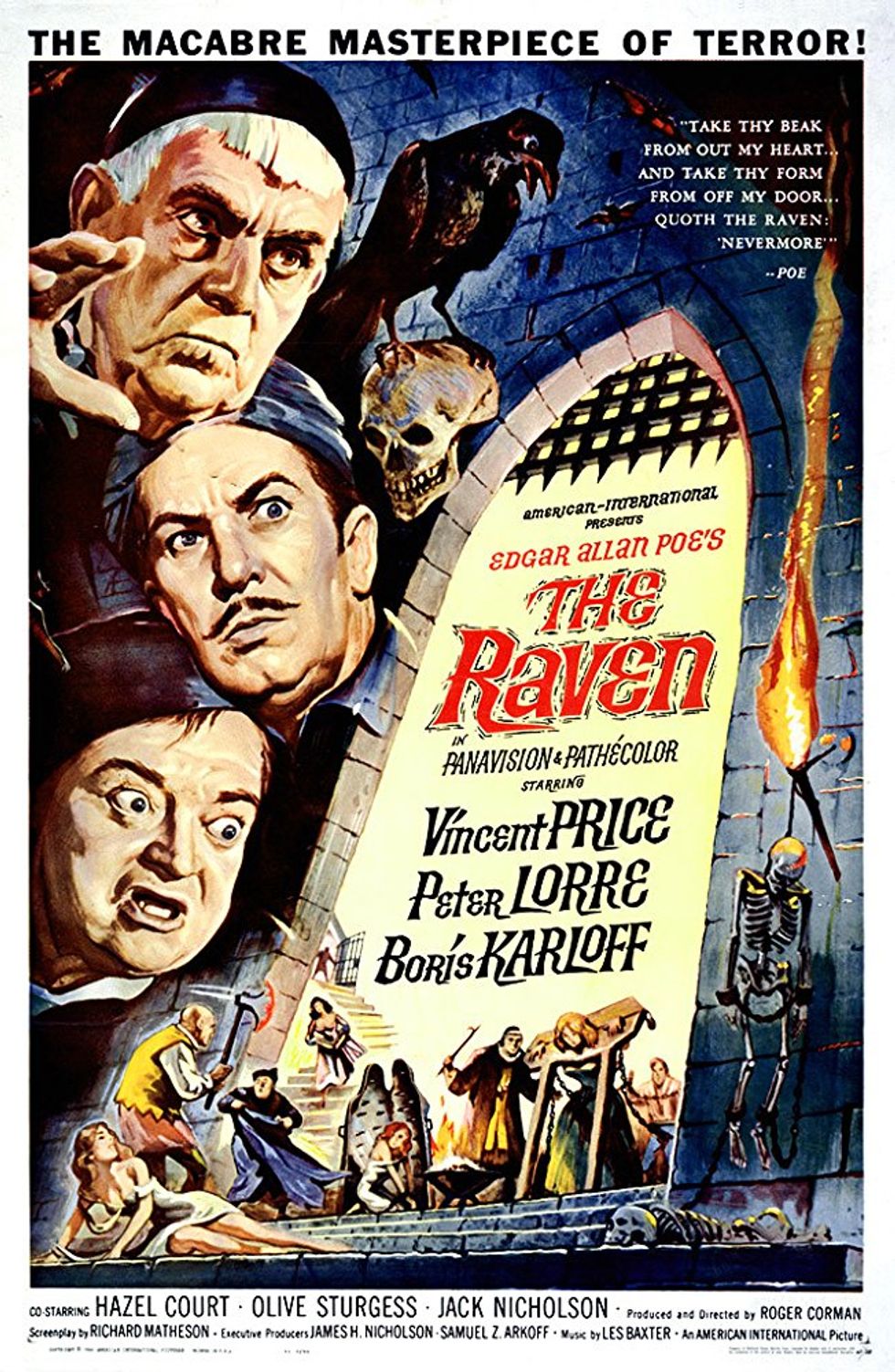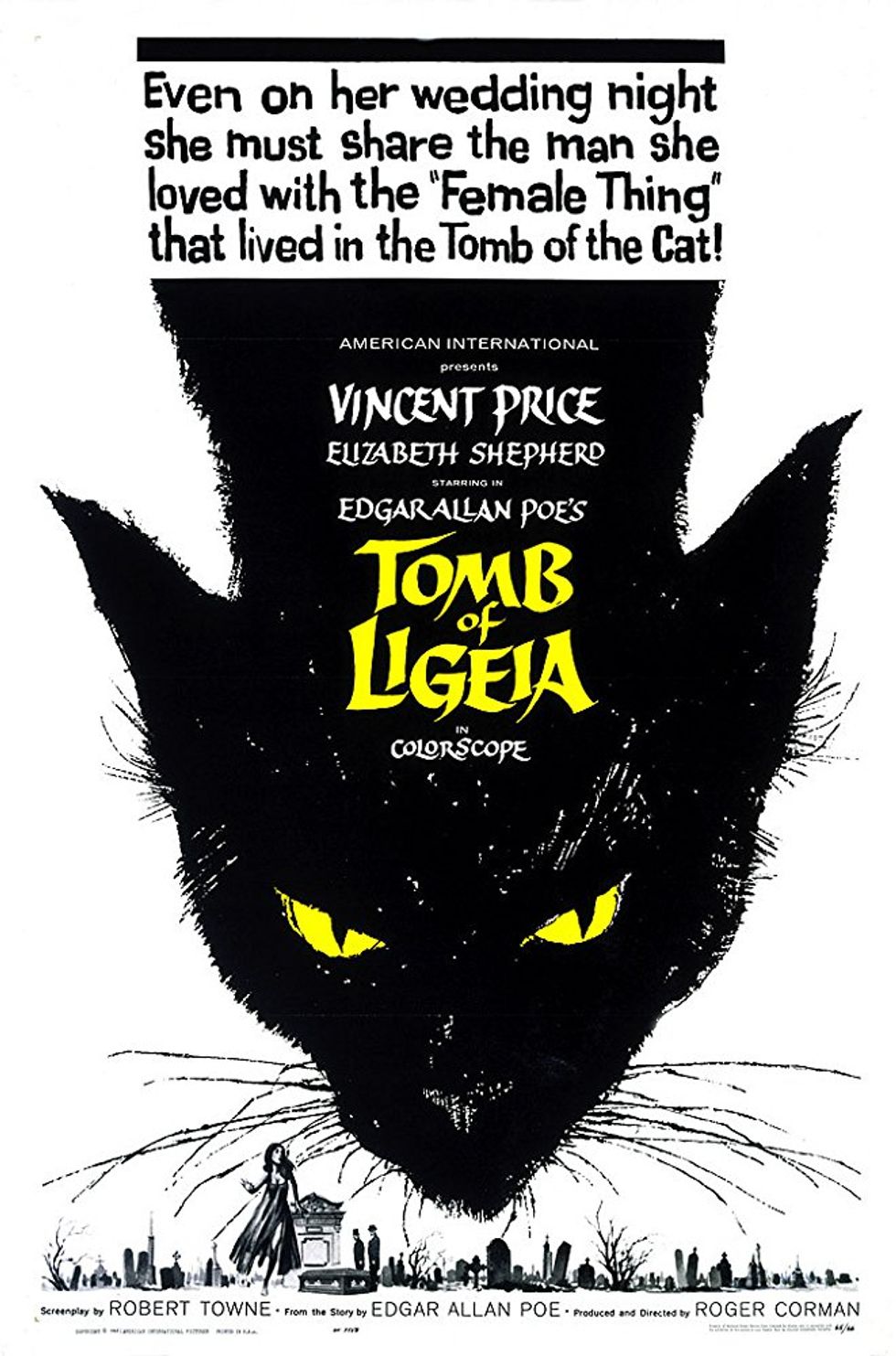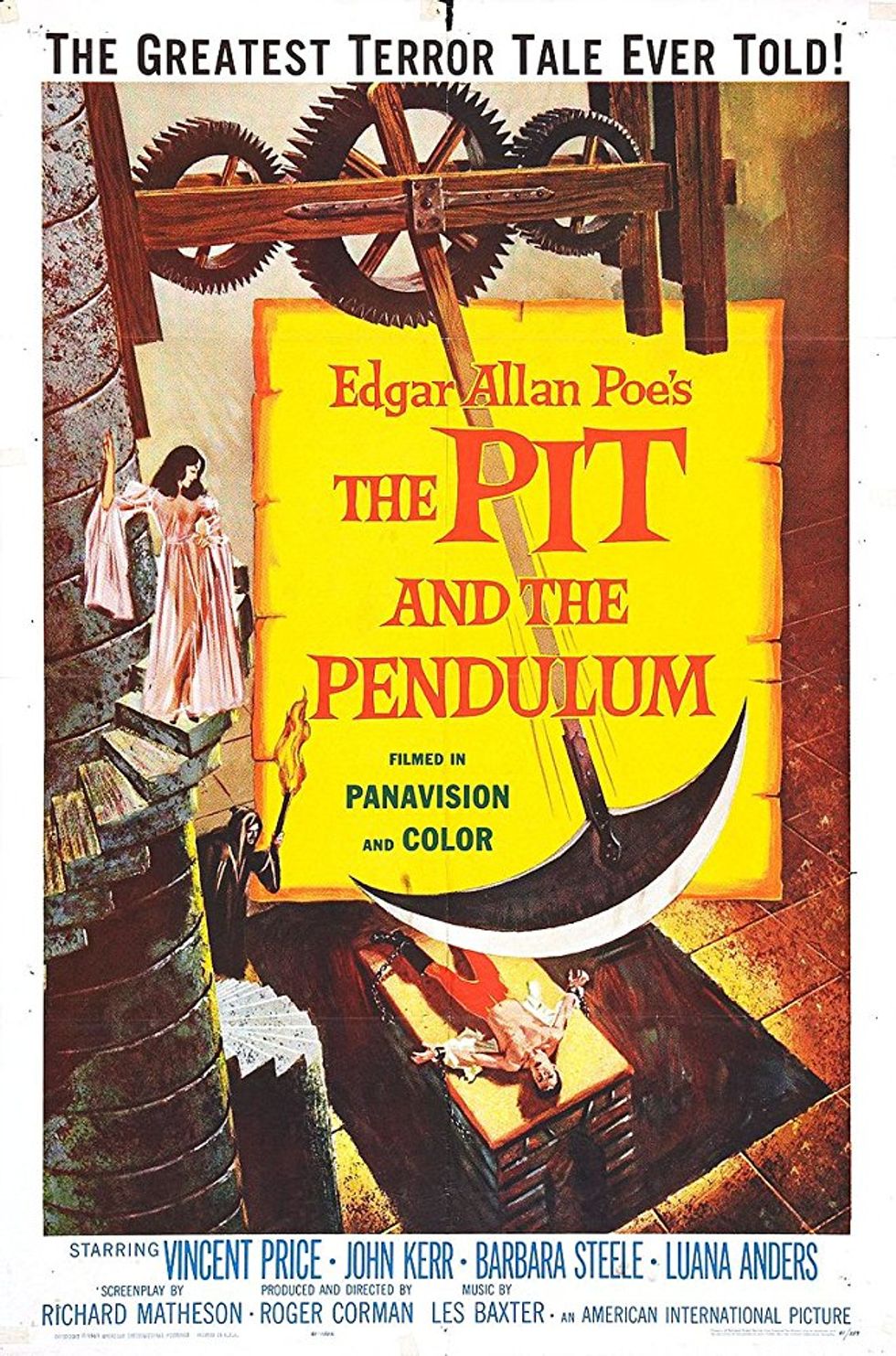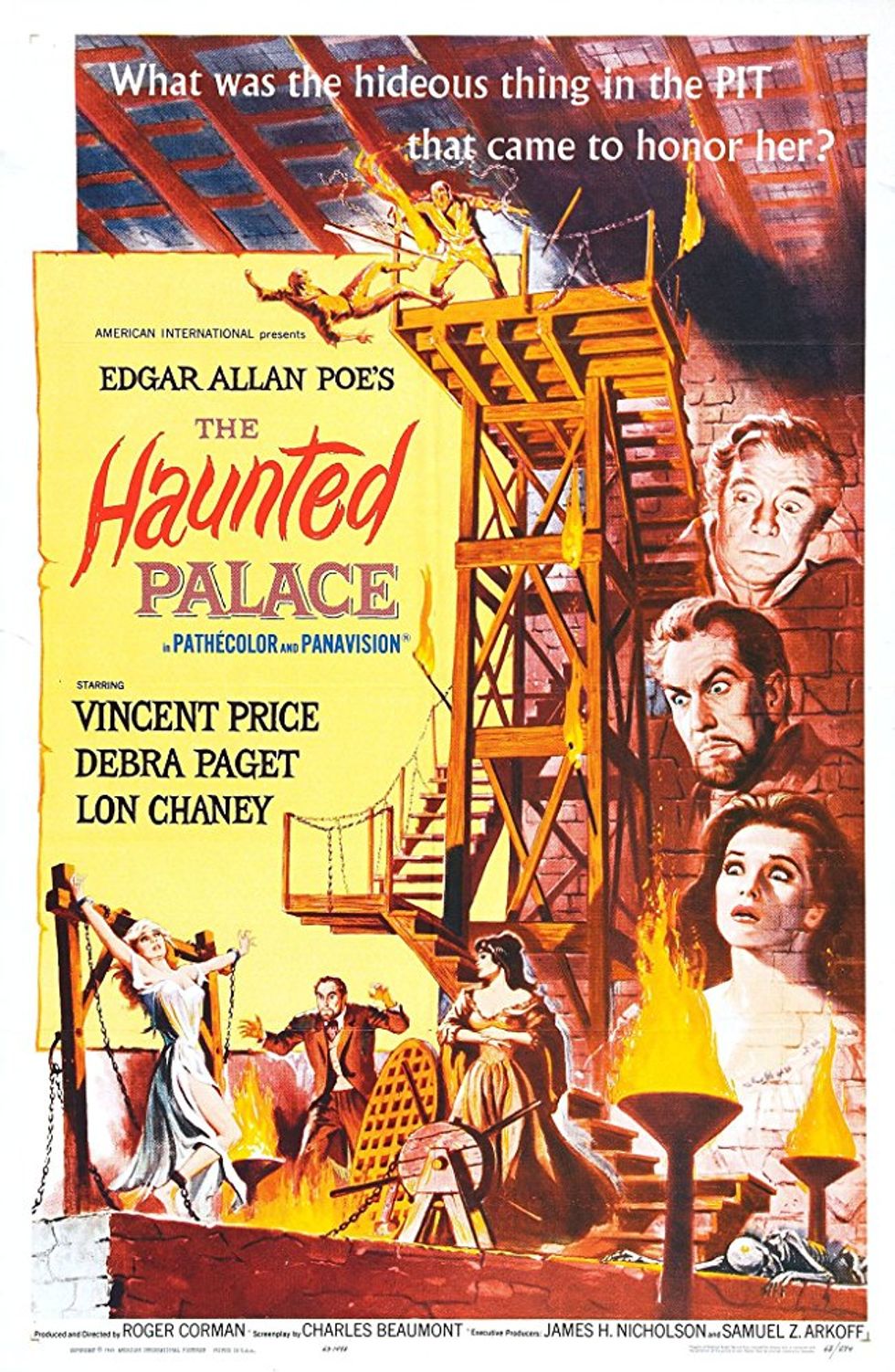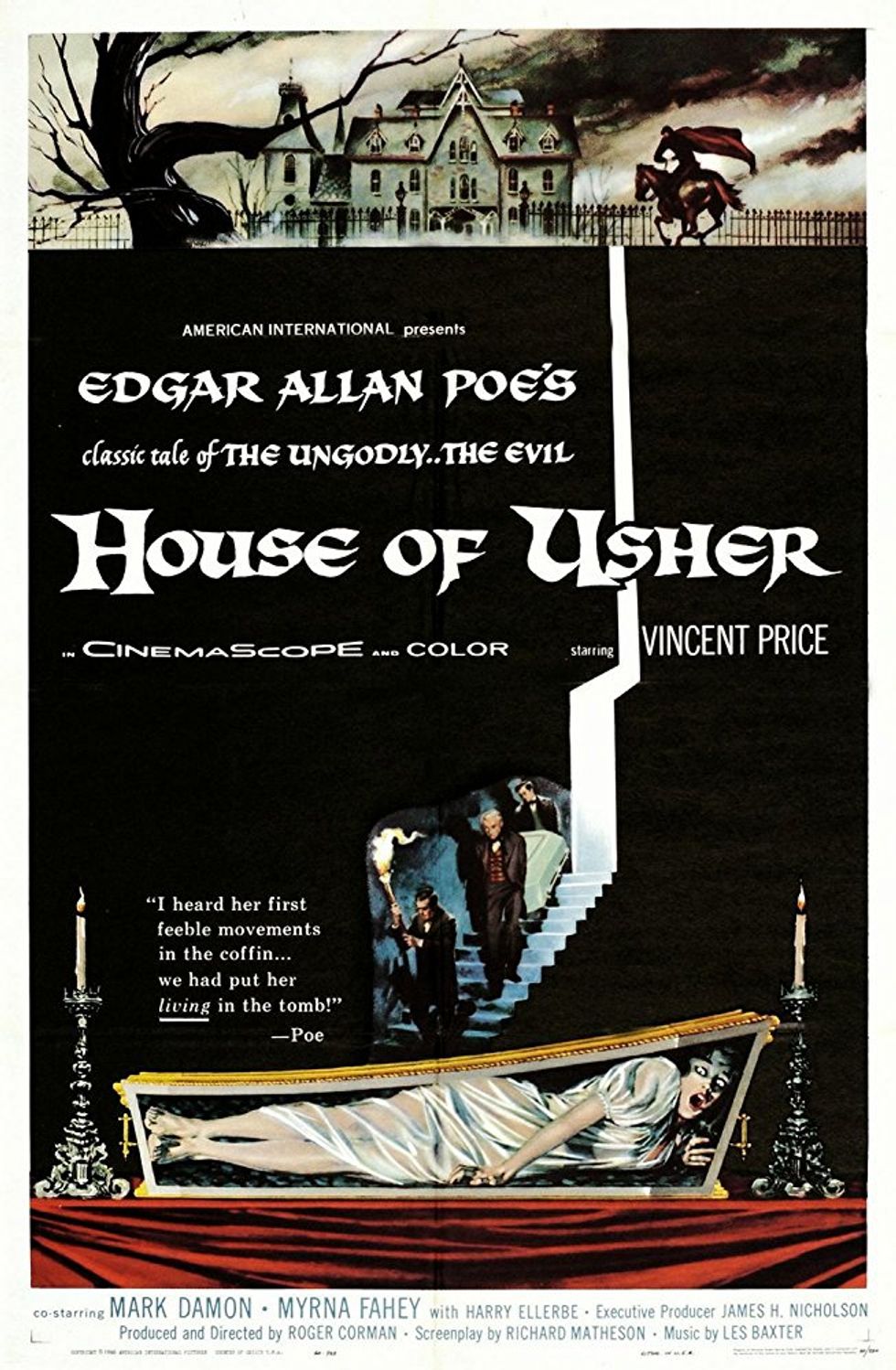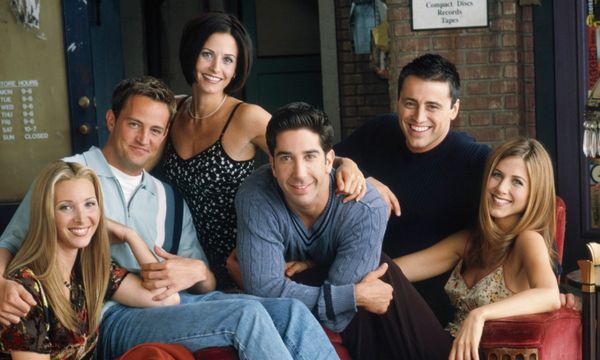Between 1960 and 1964, legendary B-Movie producer Roger Corman directed a series of eight films based on the works of Edgar Allan Poe. Compared to the rest of Corman's output (an additional 11 films) during this period, his Poe films are heavily stylized. The costumes and sets are flashy and artificial, embracing the overwrought excess of their literary inspirations. The low-budget approach to Gothic horror is quite effective, capturing the paradoxical broody stoicism and overflowing emotion that characterizes the genre. This past month I watched all eight films and have compiled a ranking of the series from worst to best. I would not recommend binging all eight films back-to-back like I did, but there is certainly a lot of fun to be had with this series.
8. "Tales of Terror" (1962)
Anthology films rarely work due to inconsistency between segments, and "Tales of Terror" is no exception. The first segment, "Morella", is too short to properly build up suspense. The second, "The Black Cat", tries to incorporate comedy into its story. This mostly amounts to Vincent Price making goofy faces and Peter Lorre embarrassing himself as a stock drunkard character. The third and final segment, "The Case of M. Valdemar", is the only interesting one of the bunch, but like "Morella", it does not get enough time to fully develop into something interesting. If you are going to skip watching a Corman Poe film, this is the one to avoid.
7. "The Masque of the Red Death" (1964)
The main conceit of "The Masque of the Red Death" is that the villainous Prince Prospero is creating a descent into hell within the walls of his castle while the countryside is ravaged by plague. The rich and powerful are supposedly safe in the castle, but Prospero's madness and decadence lead to everyone's destruction. This idea works well in the original short story, but stretched out to feature length, the idea becomes repetitive. By the end, Vincent Price may as well be directly asking the audience "Get it? Get it? Ironic, huh?".
6. "The Premature Burial" (1962)
This is the only film of the series not to feature Vincent Price, instead substituting veteran actor Ray Milland in the lead role. Milland is no replacement for Price, but the story succeeds despite his unremarkable performance. Guy Carrell (Milland) is terrified of being buried alive, and someone is trying to drive him mad through this fear. There is a degree of mean-spiritedness to the proceedings that is not present in the other Poe films that elevates its above the weaker entries in the series. Not the best, but certainly an interesting adaptation.
5. "The Raven" (1963)
Corman goes for comedy in this loose adaptation of the famous Poe poem. The results are incredibly corny, like a knockoff version of those live-action comedy films Disney was producing at the time. Much like those cheesy Disney movies, "The Raven" is fun if you are in the right mood. Vincent Price and Boris Karloff play off each other well, and their climactic wizard duel is a fun bit of bad special effects and hammy overacting. This is by far the goofiest film in the series, but the movie at least recognizes that and runs with it.
4. "The Tomb of Ligeia" (1964)
A strange but fitting note on which to end the series. The story, quite puzzlingly, leans more towards the romantic side of Gothic fiction rather than horror. The atmosphere is certainly spooky, but it does not embrace the usual horror elements as strongly as the rest of the series. Unlike the preceding seven films, "The Tomb of Ligeia" features scenes shot on location in authentic castle ruins, rather than just using a soundstage. This is by far the most cinematic looking film in the series, eschewing stagey, static framing for a more mobile camera that roams through the high-quality sets. An odd outlier in the series for sure, but it sure looks great.
3. "The Pit and the Pendulum" (1961)
Definitely one of the better Vincent Price performances in the series. His slow descent into madness over the course of the film is tragic and compelling. When Price finally goes off the deep end, he gets the chance cut loose and chew scenery as only he can do. The film is great at slowly building suspense over time, but the climactic encounter with the titular torture devices leaves something to be desired. There is never an adequate sense of danger, which kills the otherwise suspenseful editing in the film's final scenes. The rest of the movie is great, it just fumbles with the last ten minutes or so.
2. "The Haunted Palace" (1963)
Technically an H.P. Lovecraft adaptation (the Poe title was added at the insistence of the film's distributor), and a solid one at that. The moldering castle and foggy village sets bring Lovecraft's writing to life as much as Poe's. "The Haunted Palace" also features the creepiest visuals of the series, with grotesque mutant villagers and ghoulishly gray evil housekeepers. The story is much darker than the other films in the series as well, with elements of possession, eldritch monsters, and even the Necronomicon popping up at various points. As far as early 1960s horror films go, this is as close as it gets to being actually unsettling.
1. "House of Usher" (1960)
The first film in the series is also the best film in the series, most effectively capturing that intersection of low-budget filmmaking and Gothic excess. Vincent Price (looking strangely like Lawrence of Arabia) gives his best performance of the series, going for a chilling understated delivery as Roderick Usher. The movie is a slow burn, allowing for plenty of brooding from the lead actors. When the film is not reveling in emotional turmoil, there are some genuinely creepy moments, including a psychedelic nightmare sequence and a genuinely unsettling finale. If you only watch one of the Corman Poe films, this should be the one.


